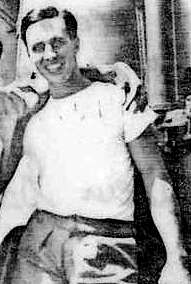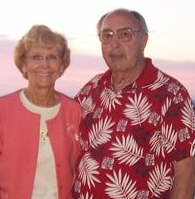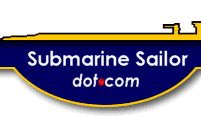|
 SSC: How did you end up in the Navy and in
submarines? SSC: How did you end up in the Navy and in
submarines?
Harry Hall: I grew up
in the small Missouri town of Boonville, located on the Missouri
River, midway between Kansas City and St. Louis on what was then
Highway 40 that passed down the Main Street. I graduated at
age 17 from High School in May 1945 while the war was still hot in
the Pacific. Several of my male classmates who had reached 18
were drafted out of school, and two had been killed.
After graduation a friend and I immediately enrolled in
Central College, Fayette, MO. The college had contracted with
the Navy for V-5, V-9 and V-12 officer programs and we took
mathematics classes with Navy boys, as civilians. This
prompted us to enlist for two years in the Navy on July 10,
1945. The capture of the German U-505 by the USS Guadalcanal
had appeared in our hometown newspaper on May 18, 1945 and we caught
the excitement of "submarine fever".
Like thousands of
others, the "Bomb" was to be our saving grace. Dropped on
August 6th, it delayed our entry and ended hostilities, but soon we
were in the Navy's San Diego boot camp. Five out of our
boot company, and from close hometowns in Missouri, sought
applications for submarine school and were
accepted.
Submarine school at New London gave us our first
taste being a submariner. We passed the physical tests.
The impact of the pressure of the cast iron diving bell being
dropped to a short depth in the tower, the 50 # air pressure
chamber, the 100' assent from the bottom of the tower to the
surface, the smell of Diesel fuel and the excitement of the school
boats going to deep sea out the Long Island Sound exit caused us to
realize we had made the right decision.
Our class left
submarine school and headed to our boat assignments, some at San
Diego and the others to Pearl. I was assigned to the USS
Queenfish SS 393 and rode the General Butler to meet her at
Pearl. Cmdr. Frank Shamer was the Skipper and Lt. Cmdr. Jack
Bennett was my XO.
A year and a half on the Queenfish was one
of the best experiences of my life, with several submarine
firsts. We were the first electrical crew to build their own
battery cells, changing from Ghould to Exide Iron Clad, first
underwater tow of another submarine although not highly successful,
and the first to install General Electric slow speed motors,
eliminating the bull gear noise.
After a research run along
the International Date Line testing specific gravity and temperature
of ocean water at various levels, we cruised past the Arctic Circle
several hundred nautical miles and eventually returned to
Pearl. My enlistment was up and I wanted to get home to
use my GI Bill and get married. I jumped the boat on arrival
at Pearl, took no addresses, and lost contact with all my
friends.
 SSC: What rekindled interest in your
submarine past? SSC: What rekindled interest in your
submarine past?
Harry Hall: Busy in college and career, the
Queenfish was just a pleasant memory. It is strange that it was not
discussed. Few knew I had been a submarine sailor. Flying became a
new interest, I had a career in education and was a School
Superintendent for 35 years. I went forty years before I
accidentally found a shipmate in Benton, KY. This was the
beginning of renewing old friendships and constructing the database
of men who served the Queenfish in its service from 1943 to
1963. When old men reminisce and dream dreams, it brings back
those days of an exciting younger life.
SSC: How did the Queenfish newsletter get
started?
Harry Hall: With the advent of
email and web site it was possible to establish a randomly published
USS Queenfish SS 393 newsletter that has tended to bring
together crewmembers and families. Children seeking
their father's submarine service and other seeking related facts,
frequently write for information.
One highly interesting request came from England
from a son whose father had been a POW of the Japanese and worked on
the Bridge across the River Kwai. He never told his family of
his experience before he died. He did mention being picked up by a
submarine named Queenfish. He had been aboard the Japanese
troop ship the RAKUYO MARU that was sunk by a U.S. submarine.
The Queenfish rescued 14 British and Aussie POWs found
drifting. I had a photo of his father as he was being pulled
from the water. The rewards have been great and this has
become one of my hobbies.
Editors note: I've
enjoyed Mr. Hall's Queenfish newsletter for several years. There are
likely many email-based newsletters for many boats and I'm sure
Harry will be pleased to be representative of them here.
- DG
|





